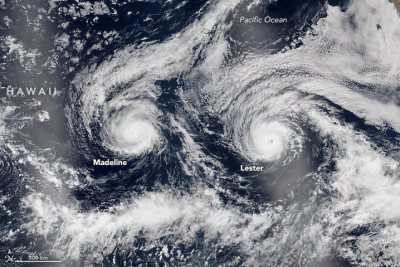PSAs could promote awareness of effects of climate change
 Image credit: NASA
Image credit: NASAThe year 2014 was a record-setting warm year. 2015 beat that by 20 percent, and so far, 2016 is on pace to set yet another new record. The global warming we are witnessing has no historical precedent, and human health and safety are at risk. Without public service announcements to improve awareness, Hawaii communities and ecosystems will be on the losing end of climate change.
What does climate change look like in Hawaii? The short answer is that it looks like the 2015/2016 El Niño.
Research conducted at the University of Hawaii Manoa and partnering institutions that was published in the prestigious journal Nature Climate Change shows that as we move into a warmer world, we are likely to experience more El Niño events – and they will be stronger.
Chip Fletcher, Professor of Geology and Geophysics and Associate Dean of SOEST, outlines the dangerous weather and ocean conditions that accompany El Niño, and that grow worse with continued global warming in Honolulu Civil Beat.



